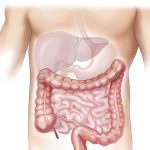
Missing Dietary Puzzle Pieces
In this podcast episode, we’re going to learn about some food sensitivities beyond the paleo autoimmune protocol: oxalates, sulfur, and salicylates. How common are these sensitivities? How do you know if you have them? And how are they treated? This is a tricky conversation, because orthorexia and food fear are common in our community. I don’t want to encourage anyone to restrict their diet unnecessarily. However, for some people, one of these sensitivities might be a missing puzzle piece to their health. My guest is Heidi Turner, an integrative dietitian trained in both western and naturopathic nutrition. She has 15 years experience working with people with autoimmune disease. She excels at helping people identify food sensitivities, treat root causes, and expand their diets again.
Listen to the Show
- Subscribe to my podcast through your favorite podcast app: iTunes, Stitcher, Google, TuneIn, Spotify, Amazon, etc.
- You can also listen to the episode right here through the player below, and if you subscribe to my newsletter you’ll get notified of future episodes.
Podcast: Play in new window | Download
Show Notes
- Intro (0:00)
- Thank You To Our Podcast Sponsor – Luminance Skincare (2:09)
- It’s winter in the Northern Hemisphere, and many of us suffer from drier skin during this season. Luminance has you covered. They have rich moisturizers that I absolutely love, including a deep hydration face cream, a rich hand cream, and a luscious foot cream. They’re all designed to deeply moisturize the skin, while also absorbing completely so you don’t feel greasy. The face cream is unscented. The hand cream is available unscented or infused with lavender essential oil. And the foot cream is lightly infused with peppermint.
- Whereas conventional skincare products are full of chemicals that can hurt our bodies, Luminance is made from ingredients that nourish. Their products are natural, organic, wildcrafted, non-GMO, and gluten-free (and they’re even made in a dedicated gluten-free facility). They’re also handmade in small batches within the United States.
- They have a complete face and body care line, including cleansers, toners, moisturizers, masks, acne serum, sunscreen, haircare, and more.
- Place an order here, and use the code HELIX for 10% off your first order.
- Meet Heidi (3:45)
- Heidi Turner received her Master’s degree in Naturopathic Nutrition Science from Bastyr University. She then pursued conventional dietitian training to earn her Registered Dietitian licensure. Her goal was to bridge these two realms of nutrition. She spent 12 years working in a rheumatology clinic, specializing in anti-inflammatory diets. Now, she has a private telehealth practice, specializing in complex cases including autoimmune disease, mast cell activation syndrome, and mold toxicity.
- Histamine Overview (7:46)
- Histamines are biochemicals naturally produced by the body, and they’re beneficial and essential to life. They help with digestion, act as neurotransmitters, assist circulation, direct our heartbeat, help with sleep, mediate inflammation, etc.
- Trouble happens if we have too much histamine circulating in our bodies. Our body is designed to build a histamine, use it, and then break it down again. If your body builds more histamine than it has the capacity to break down, that can lead to histamine overload. Enzyme deficiencies can also interfere with the breaking down process.
- Some root causes of histamine intolerance include stress, hormone imbalance, environmental reactions, gut dysbiosis, SIBO, and diet. When it comes to diet, there are high histamine foods, but food intolerances (like the ones we’re discussing in this episode) can also drive a high-histamine response.
- Some symptoms of histamine intolerance: congestion, allergy symptoms, skin rashes, hives, anxiety, insomnia, irregular heartbeat, heartburn, bloating, and diarrhea. The symptoms vary between individuals.
- Resource: Podcast Ep. 36 – Histamine Intolerance.
- Sulfur Sensitivity (12:08)
- Sulfur is a mineral that’s abundant in our body and in our environment. It’s the building block for glutathione, our body’s master antioxidant. It’s essential to detoxification and protecting our cells from cancer and chronic inflammation, and it’s also important in recovery from chronic illness. That’s why Terry Wahls recommends we eat three cups of sulfur-rich veggies daily.
- Similar to histamine, trouble happens if we have too much sulfur circulating in our bodies. This can happen if we’re taking in very high amounts, and our body can’t keep up with the glutathione conversion, or if we lack the nutrients necessary to support that conversion. This leads to an abundance of hydrogen sulfide gas in the body.
- Sulfur foods: Anything high in protein is usually high in sulfur (meat, dairy, eggs, and some legumes). Certain plant families are also high in sulfur (cruciferous vegetables and alliums). It can also be present in well water.
- Symptoms of sulfur overload: A general feeling of toxicity. Digestive issues: heartburn, belching, diarrhea, constipation, stinky flatulence. Neurological issues: headaches, eye pain, facial swelling, insomnia. Occasionally: joint pain and skin inflammation. Symptoms vary by individual.
- Determining sulfur intolerance: A lot of these symptoms overlap with other conditions. Heidi finds a SIBO test and a stool test helpful. Hydrogen-sulfide SIBO often causes sulfur intolerance, and certain bacteria in the large intestine can create an overabundance of hydrogen sulfide gas as well. Another red flag is if someone feels worse when switching to a high-protein diet.
- A low-sulfur diet is an excellent test, because if sulfur is an issue, people should feel better very quickly (within 1 week). However, you don’t want to stay on a low-sulfur diet long-term. The mineral is too important for the body. Think of it like clearing a congested pathway, and then Heidi looks for the root causes behind the congestion and ways to support the pathway going forward.
- What does a low-sulfur diet look like? It’s low-protein, and Heidi recommends small portions of fattier cuts of meat and seafood to increase the ratio of other macronutrients. Non-sulfur veggies are allowed as well as seeds and rice (if tolerated).
- Treatment:
- Root cause resolution: Treat SIBO and gut dysbiosis if present, and filter water if it’s high in sulfur.
- Remove unnecessary supplements that are high in sulfur (like many detoxification supplements such as NAC, MSM, ALA, and glutathione).
- Potentially add different supplements that support sulfur pathways (i.e. molybdenum and B vitamins).
- Short-term low-sulfur diet (only if needed). And then Heidi guides reintroduction of sulfur back into the diet again.
- Salicylate Sensitivity (25:51)
- Salicylate is a phenolic compound found in many plants and herbs, so it’s present in most fruits and vegetables, herbal supplements, as well as some medications and skincare products.
- It has many benefits. It’s antioxidant, antimicrobial, analgesic, and anti-inflammatory. That’s why plant foods are so highly recommended on a healthy diet. It’s also why it’s a component of many medications, including aspirin.
- Salicylate intolerance is relatively uncommon, but Heidi has seen it in her practice. Symptoms often center around the skin and lungs: asthma, uticaria (hives), eczema, nasal polyps. GI issues are sometimes involved as well. If someone knows they are intolerant to many herbal supplements, or intuitively avoids many fruits and vegetables, those are both red flags.
- A low-salicylate diet is very challenging and it takes 2-4 weeks before symptoms start to improve. What does a low-salicylate diet look like? All meat, seafood, eggs, and dairy are allowed. Starchy vegetables are usually fine as well, as long as you don’t eat the skin. However, all herbs and spices are avoided along with most fruits and vegetables. Cruciferous vegetables and alliums are the exception – those are both allowed. Legumes are allowed too, including fresh legumes like green beans and peas. But all nuts and seeds are avoided.
- The root cause usually involves problems with detoxification, particularly the glucuronidation and glycine conjugation pathways.
- Treatment:
- Root cause resolution: Look at factors that might be overwhelming those detox pathways (medications, alcohol, mold toxicity, fungal overgrowth, environmental toxin exposures). Treat and eliminate those if possible.
- Support the pathways through supplementation. Helpful supplements may include Calcium-D-glucarate, glycine, DAO, B6, phenolic enzymes, or high-dose fish oil. It’s important that these supplements don’t contain salicylates.
- A low-salicylate diet is often needed while the above work is being done. However, the goal is always to expand the diet again. While on this diet, it’s important to work with a nutritionist to be sure you’re getting the nutrients you need. In addition to food recommendations, Heidi will often prescribe a multi-vitamin as well. She likes Pure Encapsulations Nutrient 950, because it doesn’t contain high-salicylate herbs that are commonly found in many other multi-vitamins.
- Oxalate Sensitivity (37:39)
- Oxalate is a compound found in many plants. It’s considered an anti-nutrient because it doesn’t provide nutrition for our bodies, and it can also interfere with absorption of certain minerals like calcium and magnesium. However, that doesn’t mean high-oxalate foods are automatically unhealthy. All foods have a blend of nutrition and anti-nutrition. The paleo diet focuses on foods that have a higher nutrition ratio, and many high-oxalate foods (like spinach, chard, and beets) are full of other beneficial nutrients.
- Oxalates are also food for our microbiome. There’s a number of beneficial bacteria that consume them, but especially oxalobacter formigenes.
- Similar to the other sensitivities, trouble happens if we have more oxalate circulating in our bodies than we can use or eliminate. Our body will then store it in the tissues, which can cause a range of symptoms.
- Symptoms of oxalate sensitivity: Kidney stones – oxalate binds with calcium in the blood, creating little crystals that can sometimes lodge in the tubules of the kidney, thus creating kidney stones. Urinogenital symptoms: interstitial cystitis, chronic UTI’s, vulvodynia, pelvic pain. Joint and muscle pain, particularly fibromyalgia. Neurological symptoms: anxiety, depression, headaches, migraines. Skin irritation and digestive symptoms are sometimes present as well. Symptoms vary by individual.
- Testing: A Urine Organic Acids Test can be very helpful, because it tests for oxalic acid, its precursors, and metabolites. However, sometimes the oxalates stored in the cells don’t show up in the urine, so this test isn’t foolproof. If oxalates appear to be an issue, Heidi will also test for mold toxicity and fungal overgrowths, because both produce oxalates.
- Treatment:
- Root cause resolution: Treat mold toxicity and fungal overgrowths, if necessary. Antibiotics can kill off the beneficial bacteria that consume oxalates, so if there’s a history of antibiotic use, rebuilding a healthy microbiome is key.
- Remove supplements that increase oxalates in the body (like vitamin C).
- Potentially add supplements that support oxalate metabolism (like B6). And if people can tolerate calcium and magnesium citrate, it binds to oxalate in the gut so it can be eliminated through the stool.
- Low-Oxalate Diet – Heidi uses this as a last resort, because it’s very challenging. You have to approach this diet slowly to avoid “oxalate dumping”. When the bloodstream is clear of oxalates, your body will start releasing it from the tissues. If this happens too fast, it can be very uncomfortable. The recommendation is to reduce oxalate consumption by 10-20% per week, and it can take several months to experience benefits. Resource: Oxalate Foods (divided into 4 categories from high to low).
- Food Fear (53:27)
- When we identify that certain foods cause pain or other debilitating symptoms, it’s natural to experience some food fear. However, fear surrounding food can increase food intolerance as well, so it’s important to be aware that the psychology of eating (our mindset) plays a role.
- That’s why Heidi’s first goal is education: What is the food compound causing symptoms? What are the root causes behind it? What treatment options are available? And how can tolerance be restored? Restricted diets are meant to be short-term. The long-term goal is always to expand the variety of foods we eat again.
- It’s important to understand that the food isn’t the problem. Food intolerance is a symptom of a greater dysregulation. Once assessed and treated, symptoms and tolerance can improve.
- Resources:
- Outro (57:40)
- Heidi Turner is an integrative dietitian who works with people worldwide. You can connect with her through her website: Food Logic.
- Eileen (your podcast host) is the author of multiple books, written to help people thrive with autoimmune disease. Learn more on the Books Page.
- If you like this podcast, follow or subscribe through your favorite podcast app. You can also subscribe to Eileen’s biweekly newsletter.
- Check out the entire archive of podcast episodes.
You May Also Be Interested In
Spreading the Word
If you like the podcast, please leave a positive review in iTunes. It would mean the world to me, and also helps others find the podcast. Here are some quick instructions using your iPhone:
- If you are already subscribed to my podcast: (1) Click the purple podcast icon. (2) At the bottom of the screen, click Library. (3) At the top of the screen, click Shows. (4) Click the Phoenix Helix podcast image. (5) Scroll down the page, and you’ll see Ratings and Reviews. Scroll down a little bit more and click on Write a Review. This will bring up the review screen. Tap 5 stars (if you love the podcast), and then click in the title box, and it will bring up the keyboard. Enter a title and short review. (6) Click Send in the upper right corner. (7) Thank you! Positive reviews give the podcast a higher search ranking in iTunes, helping people find it and letting them know it’s a quality podcast and worth their time to listen.
- If you haven’t subscribed to my podcast: (1) Click the purple podcast icon. (2) In the lower right corner, click the magnifying class. (3) Type Phoenix Helix in the search box. (4) Click the podcast cover in the Show list. (5) If you’d like to subscribe, click the + sign at the top of the screen. (6) To write a review, scroll down the page, and you’ll see Ratings and Reviews. Scroll down a little bit more and click on Write a Review. This will bring up the review screen. Tap 5 stars (if you love the podcast), and then click in the title box, and it will bring up the keyboard. Enter a title and short review. (7) Click Send in the upper right corner. (8) Thank you! Positive reviews give the podcast a higher search ranking in iTunes, helping people find it and letting them know it’s a quality podcast and worth their time to listen.







